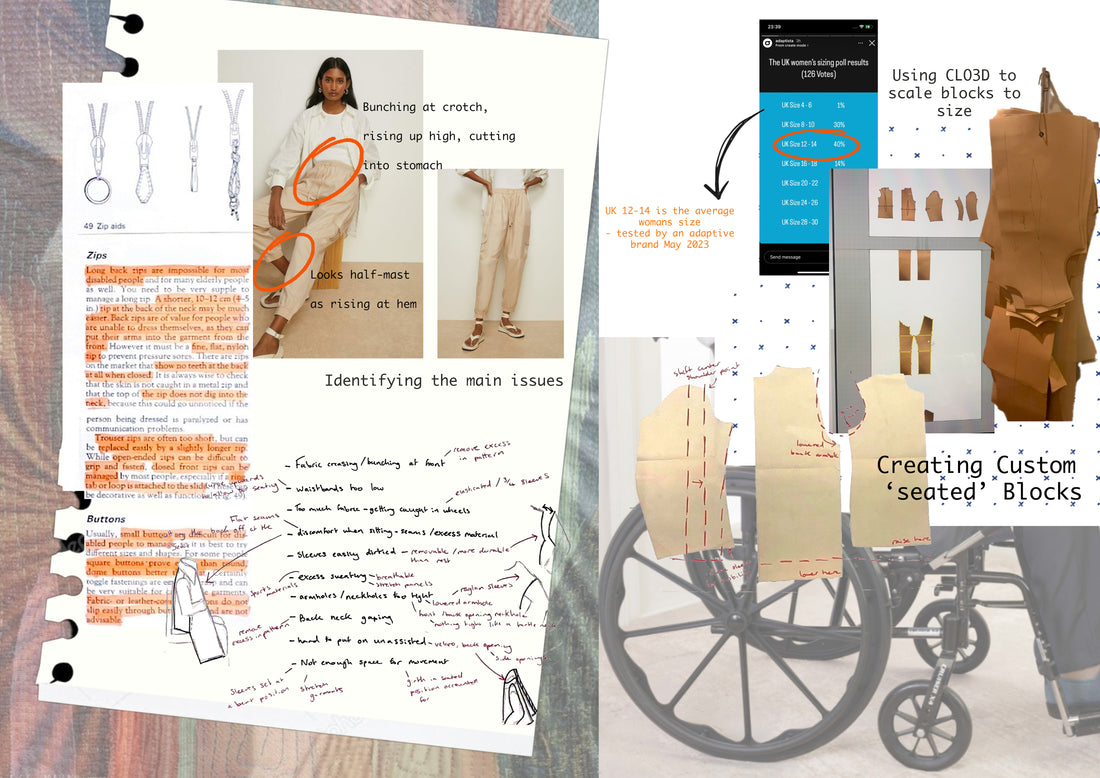
A Journey Through Time: The Evolution of Adaptive Fashion for the Disabled Community
Share
The history of adaptive fashion is a story of resilience, innovation, and progress. From the functional designs of the early 20th century to the cutting-edge technology of today. The term "adaptive fashion", a relatively new phrase, is a reminder of the ongoing evolution in our understanding and approach to inclusive design. At Intotum, we're proud to be part of a movement that transcends traditional fashion norms, embracing diversity and creating a space where everyone can express their unique style. Today, let's take a stroll through history to explore the remarkable evolution of adaptive fashion for the disabled community.
The Early Years: Functional Necessity Inspires Design
The roots of adaptive fashion can be traced back to the early 20th century when the focus shifted towards creating clothing that met the practical needs of individuals with disabilities. The initial designs were driven by functional necessity, with features like adjustable closures and easy-access fastenings intended to make dressing more manageable for those with mobility challenges.
World War II: Catalyst for Change
The mid-20th century marked a significant turning point for adaptive fashion. World War II led to an increased awareness of the needs of injured veterans, spurring innovations in clothing design. Adaptive features such as velcro closures and adjustable waistbands gained popularity, providing both functionality and comfort for those with physical disabilities.
The Emergence of the Term "Adaptive Fashion"
While the concept of creating clothing for individuals with disabilities has deep historical roots, the term "adaptive fashion" itself is relatively recent. Coined to encompass a wide range of designs that prioritize functionality and accessibility, the term gained prominence in the 80's as the fashion industry began recognising the unique needs of diverse communities.
The Rise of Specialised Brands: The 80's
As awareness grew, specialised adaptive clothing brands emerged, recognizing the diverse needs of the disabled community. These brands focused on creating stylish yet functional garments, paving the way for the concept of inclusive fashion. Adaptive fashion became a symbol of empowerment, allowing individuals to dress with independence and confidence.
Technology Meets Fashion: 21st Century
The 21st century witnessed a remarkable intersection of technology and fashion, bringing about a revolution in adaptive design. Innovations such as magnetic closures, temperature-regulating fabrics, and 3D-printed accessories became integral parts of adaptive fashion. These advancements not only enhanced functionality but also contributed to the aesthetic appeal of adaptive clothing.
Fashion as a Tool for Advocacy: Today and Beyond
In recent years, adaptive fashion has transcended mere functionality; it has become a powerful tool for advocacy and representation. Brands like Intotum are leading the charge, championing the idea that fashion should be inclusive and accessible to everyone, regardless of ability.
Intotum's Contribution to the Evolution:
At Intotum, we are committed to building upon the rich history of adaptive fashion. Our designs are a testament to the journey of inclusivity, seamlessly blending style and functionality. We draw inspiration from the past while embracing the latest innovations to create clothing that not only meets the diverse needs of our community but also celebrates individuality.
